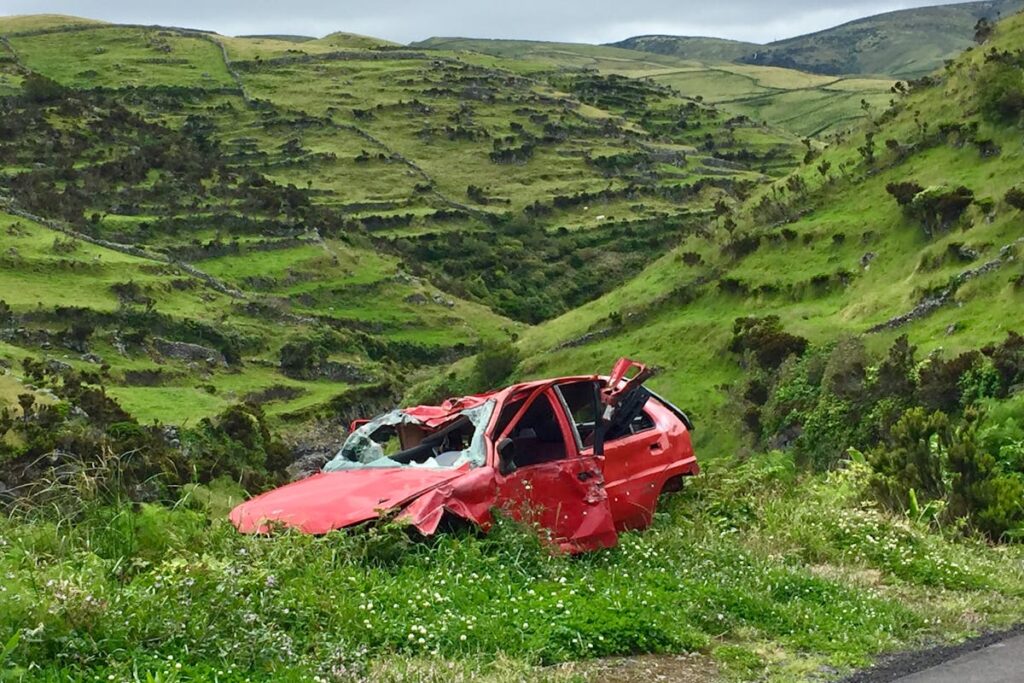Maneuvering the aftermath of a California car accident can be a challenging task, particularly when it comes to filing claims for property damage. The process requires a keen understanding of insurance policies, negotiation strategies, and legal obligations. With careful documentation and strategic planning, it is possible to secure a fair settlement for your damages. However, the question remains – what are the key steps involved in this process and how can they be effectively executed? These essential aspects will be the focus of our forthcoming discussion.
Key Takeaways
- Understand California’s “tort” system, which holds the at-fault party liable for property damages in car accidents.
- Document the accident scene thoroughly, capturing vehicle damage, positions, and witness statements to establish fault.
- Report the accident to authorities promptly to secure an unbiased account and essential details supporting your claim.
- Assess the damage professionally to determine the cost of repairs or replacement, forming the basis of your claim.
- Navigate the claim process with knowledge of your insurance policy, assertive negotiation strategies, and patience to ensure a fair settlement.
Understanding California Car Accident Laws
While it may seem complex, understanding California car accident laws is essential for anyone seeking to file a claim for property damage. These laws operate under a “tort” system, where the party at fault for the accident bears the liability for all damages. The determination of car accident liability is a critical step in the claims process. It involves an in-depth investigation of the accident circumstances, review of evidence, and often, negotiation among insurers. Once liability is established, the property damage evaluation can commence. This process involves evaluating the extent and cost of vehicle repairs or replacement. Understanding these laws can help claimants navigate the legal complexities and guarantee fair compensation for property damage sustained in a car accident.
Importance of Immediate Post-Accident Actions
Taking swift and appropriate action in the immediate aftermath of a car accident is vital to successfully filing a claim for property damage. The chaos of the accident scene can be overwhelming, but adhering to a post-accident checklist can help guarantee that essential steps are not overlooked. This includes immediate documentation of the incident, which is a primary factor in establishing fault and determining compensation. Even minor details could have a significant impact on the outcome of your claim. The importance of immediate post-accident actions cannot be overstated. They not only provide a reliable record of the incident but also serve as a basis for establishing liability, which is critical in the pursuit of property damage claims.
Documenting the Accident Scene
To guarantee the success of your property damage claim, it is essential to meticulously document the accident scene. Begin by taking thorough accident photos from multiple angles, capturing the overall scene, vehicle positions, and specific damages. This visual data can provide a compelling narrative of the incident, complementing official accident reports. However, photos alone are not enough. Engage with bystanders to gather witness statements. People present at the time of the accident can provide invaluable perspectives that reinforce your claim. Make certain these statements are detailed and accurately reflect the incident. Remember, a detailed, well-documented accident scene is a powerful tool in substantiating your property damage claim in California.
Reporting the Accident to Authorities
What follows after a meticulous documentation of the accident scene? Reporting the accident to authorities becomes the next vital step you should undertake. It is not only a legal obligation but also a strategic move, as this official account can serve as an unbiased version of events. This ‘accident report’ is typically prepared by a law enforcement officer who investigates the accident scene. The report encompasses essential details about the accident, including the parties involved, the circumstances leading to the accident, and an assessment of the damage incurred. It’s imperative to guarantee the accuracy of this report, as it can greatly impact your property damage claim. Remember, your case is as strong as your documentation and reporting.

Filing Your Property Damage Claim
Initiating the process of filing your property damage claim involves two vital steps: comprehending the claim process and efficiently traversing through insurance negotiations. A thorough understanding of the claim process is essential to guarantee that all necessary requirements are met, thereby increasing the likelihood of a successful claim. Concurrently, adept negotiation with insurance companies can lead to a favorable settlement, minimizing potential financial losses.
Understanding the Claim Process
Steering through the intricacies of the claim process becomes an essential task after experiencing property damage due to a car accident. It begins with understanding different claim types, each tailored to cover specific damages. Thorough claims cover non-collision related incidents, while collision claims address damage from hitting other vehicles or objects.
The next phase involves damage assessment, which is a meticulous appraisal of the damage to your vehicle. This process involves professionals who scrutinize the extent of harm to determine the cost of repairs. It’s crucial to have a clear understanding of this procedure as it forms the basis of the claim amount. Remember, comprehension of these steps is essential in ensuring a smooth claim process.
Navigating Insurance Negotiations
While the claims process may seem intimidating, successfully maneuvering through insurance negotiations for filing your property damage claim is an important component. Understanding the specifics of insurance policies can provide an advantageous position during these negotiations. They encompass various elements like deductibles, limits of coverage, and exclusions that can greatly impact your claim’s outcome.
Implementing effective negotiation strategies is equally vital. These can involve presenting thorough documentation to substantiate your claim, being prepared to counter low initial offers, and maintaining open communication with the adjuster. Remember, negotiation is a two-way process. It is about reaching a fair settlement that adequately compensates for your damages, rather than winning a battle. Be patient, assertive, and knowledgeable to navigate these negotiations successfully.
Dealing With Insurance Companies
Maneuvering through the complex process of dealing with insurance companies post a car accident can often be an intimidating task. It’s essential to thoroughly understand your insurance policy’s terms and conditions to prevent claim denial due to non-compliance.
Insurance companies may employ various tactics to minimize claim payouts, such as disputing the extent of property damage or attributing fault to the victim. It’s recommended to document all communication, retain all receipts, and compile a thorough record of damages.
Should your claim be unfairly denied, it’s important to know the appeal procedures outlined in your insurance policy. However, managing this process can be intricate and may necessitate professional guidance, which will be discussed in our next subtopic, “Seeking Legal Assistance for Claims”.
Seeking Legal Assistance for Claims
Maneuvering the labyrinthine process of insurance claims can often prove too challenging for individuals unfamiliar with the intricacies of the legal system. Seeking legal representation is a viable solution to guarantee that your interests are safeguarded. Skilled attorneys can guide you through the complexities of the claim evaluation process, assuring you understand every aspect it entails. They can also negotiate with insurance companies on your behalf, aiming to yield a fair settlement. Their expertise can be invaluable in situations where claims are denied or disputed. Furthermore, they can help you navigate potential legal proceedings if necessary. Consequently, obtaining legal assistance can greatly streamline the claims process, potentially leading to a more favorable outcome.
Frequently Asked Questions
What if My Car Was Damaged in a Hit-And-Run Accident?
In a hit-and-run accident, follow standard hit and run procedures: report to police, gather evidence, and notify your insurance company. Your uninsured motorist coverage can potentially cover damages if the responsible party is unidentifiable.
How Does a Pre-Existing Vehicle Condition Affect My Property Damage Claim?
Pre-existing vehicle damage can greatly impact your property damage claim. Insurers may deduct the costs related to pre-existing damage from your claim payout, potentially reducing your overall insurance coverage for the accident.
Can I Claim for Personal Items Lost or Damaged in the Car Accident?
Yes, personal items lost or damaged in a car accident can be claimed. However, this is contingent on the specifics of your insurance coverage, which may or may not include personal property.
What Happens if the Other Drivers Insurance Company Denies My Claim?
If the other driver’s insurance company denies your claim, you may initiate the claim appeal process. Utilizing strategic insurance negotiation strategies can potentially overturn the denial, ensuring compensation for your property damage.
How Long Does It Usually Take to Receive a Settlement for Property Damage?
The settlement timeline for property damage claims varies considerably, typically taking between a few weeks to several months. This duration is contingent on the complexity of the claim process and the details of the damage incurred.

